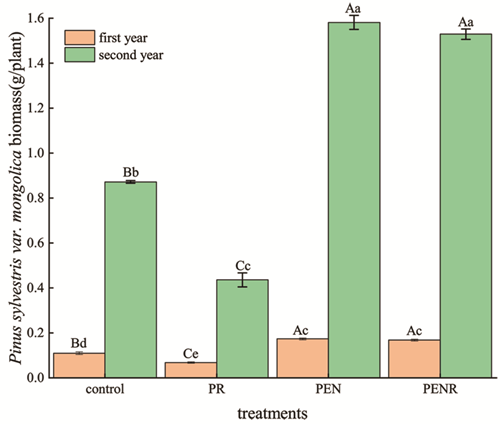How to promote the Growth of Pinus sylvestris var. mongolica?
The seedlings of Pinus sylvestris var. mongolica, the annual seedlings exhibit the highest incidence rate, with a mortality rate of up to 50% upon disease incidence . Over-reliance on chemical pesticides has caused serious problems such as soil compaction, degradation of soil fertility, increased drug resistance of the pathogens and pests, destruction of soil’s micro-ecological environment, increased crop phytotoxicity, and weak seedling growth.
In comparison to the use of chemical pesticides, the application of beneficial microorganisms and microbial metabolites represents a novel environmental-friendly approach for plant management as the latter does not cause pollution, releasing of residues, and killing of natural enemies and also lowers the possibility of drug resistance in pathogens and pests. This approach is conducive to human and animal safety, environment protection, disease prevention and treatment, and production improvement.
Introduction of a variety of plant rhizosphere beneficial microorganisms for a synergistic effect produced by their interaction with the plants significantly improves the microbial community structure in the nursery soil, ameliorates the physical and chemical properties of the soil, promotes the plant growth, and enhances the disease and stress resistance in plants. Therefore, it is an effective approach to resolve the multiple problems encountered in nurseries these days.

Between-group differences and annual changes in seedling biomass.
How does the inoculation with Ectomycorrhizal fungus N94 and T. harzianum E15 influence the growth of the plants?
How does the inoculation with Ectomycorrhizal fungus N94 and Trichoderma E15 influence the fungal community structure in the seedling rhizosphere soil?
Does the inoculation with Rhizoctonia solani J.G. Kühn after the co-inoculation with the Ectomycorrhizal fungus and Trichoderma influence the fungal community structure in the seedling rhizosphere soil?
What is the relationship between Ectomycorrhizal fungus N94, Trichoderma E15, and the fungal community structure?
What are the annual change in the fungal community structure and the change in relationships among the bacterial communities under each treatment?
How does the co-inoculation with Ectomycorrhizal fungus N94 and Trichoderma E15 influence the physical and chemical properties of the soil? What is the relationship between the flora and the physical and chemical properties of the soil?
The paper offers interesting and relevant data, results are very interesting. For information, please click: https://ojs.bilpublishing.com/index.php/re/article/view/3286




